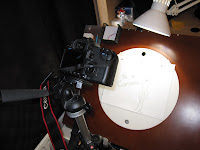Blog Archive
-
▼
2009
(70)
-
▼
October
(32)
- Rocketman!
- Shooting Setup for Rocketman
- Beginnings, Ends and Squiggly Lines
- Anticipation (Splat)
- Looking(?) at Sound
- Rocketman Test 6 and The Principals
- Rocketman Test 5
- Rocketman Test 4
- Inspirational Findings
- Le Voyage Dans la Lune
- Colour!
- Life Drawing Continued
- From Pencils to Pixels
- Rocketman Test 3
- Mini DV vs DSLR
- Anticipation (of a wascally wabbit) Test
- Musings on Today
- Still Life Continued
- Rocketman Test 2
- Crit and alterations
- Rocketman Test 1
- Still Life Continued
- Getting my Desk Sorted
- Ball Bounce 1 & Colour Test
- Still Life Sketchbook
- Ball Bounce 1 Test 2
- Ball Bounce 1 Test
- Exaggeration Animation
- Another Test
- Expressions and Exaggeration
- RVJ Sketches: Studying Faces
- Flipbook 3
-
▼
October
(32)
Popular Posts
-
Just a collection of shot from today's progress on the full-body armature/puppet, have to leave it mid-foaming up for tonight....
-
I first stumbled across this character designer and comic artist when I was given a free book by accident from a book shop. I'm sure gla...
-
Initial layers of standard latex used to build up the detail areas such as eyelids etc Colouring the latex: a good glug of water, plenty of...
-
Looking at a few references of laboratories and mad scientists (very much the movie-versions) And so I've started to add details to ...
-
Well, here it is, the final completed film! If you go to Vimeo , you can watch it in HD. Thank-you to everyone who helped in one wa...






































